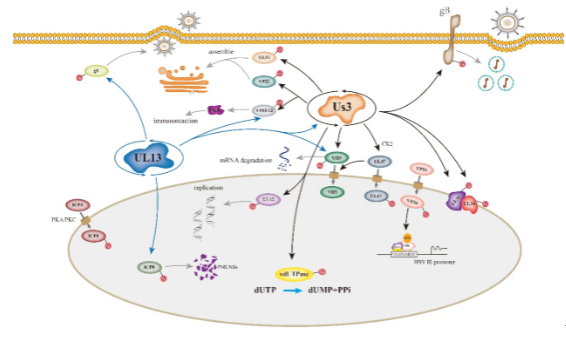The alphaherpesvirus contains dozens of viral proteins in the envelope, tegument and capsid structure, each of which plays an indispensable role in the process of virus adsorption, invasion, uncoating and release. In the process of infecting the host, the virus will use a variety of ways to eliminate unfavorable factors to itself, so as to escape or suppress the attack of the host immune system. Post-translational modification of proteins, especially phosphorylation modification, regulates the changes of protein conformation and biological activity through a series of complex mechanisms. Many viruses have evolved mechanisms to use phosphorylation systems to regulate their viral proteins and to establish a suitable cellular environment for efficient viral replication and virulence. In this paper, the viral protein kinases and regulation of viral proteins function by phosphorylation modification in alphaherpesvirus were summarized, in addition, this paper also provides new ideas for further research on the role of post-translational modification of viral proteins in the virus life cycle, which is helpful to understand the mechanism of viral infection to the host and provide some new directions for antiviral treatment.
This paper was published in Veterinary Research (IF=3.829), and titled as “Regulation of alphaherpesvirus protein via post-translational phosphorylation”. Doi: 10.1186/s13567-022-01115-z.

Figure 1: Summary of the major functions of viral protein kinases and phosphorylated proteins in alphaherpesvirus.

